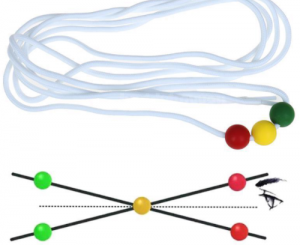Wondering who can benefit from vision therapy?
Here are some of the most common eye conditions that can be treated with vision therapy.
Vision therapy is an effective treatment program designed to strengthen the neural connections between the eyes and brain, and improve the visual skills necessary for reading, learning, working and playing sports.
By strengthening the visual system, many uncomfortable symptoms can be reduced or even eliminated, to help you see more clearly and comfortably and improve your quality of life.
Here is a list of 9 eye conditions that can be treated with vision therapy:
1. Convergence insufficiency
Convergence insufficiency (CI) is a condition in which the eyes are unable to work together as a team when focusing on nearby objects.
Convergence insufficiency impacts the lives of up to 15 percent of all people, of all ages, but has the greatest impact on students and those with jobs that require extensive computer use.
Convergence insufficiency commonly results in:
- Blurry vision
- Double vision
- Headaches
- Difficulty focusing on an object for long periods of time
Convergence insufficiency can make reading, writing and computer work difficult, and significantly impact school and work performances.
Many studies show that vision therapy is the most successful treatment for convergence insufficiency.
2. Binocular vision dysfunction
Binocular vision dysfunction (BVD) occurs when the eyes are not aligned with one another.
Even the slightest degree of misalignment can prevent the brain from accurately interpreting and merging the unique visual images sent from each eye.
BVD can be the cause of a student’s learning difficulties or an adult’s struggle to maintain concentration at work.
The following symptoms can indicate BVD:
- Blurry or double vision
- Eye strain
- Headaches
- Dizziness
- Motion sickness
- Anxiety
Fortunately, vision therapy along with micro-prism lenses, can successfully treat BVD and its uncomfortable symptoms.
3. Autism-related eye disorders
Vision problems, particularly in relation to spatial awareness and visual processing difficulties, can worsen certain symptoms and behaviors linked to autism (ASD).
Some of the most common ASD-related symptoms that can be exacerbated by a vision problem include:
- Flapping fingers in front of eyes (visual stimming)
- Looking beyond/through objects
- Poor eye contact
- Rolling eyes
- Sensitivity to light
- Showing either little/no fear of heights or an excessive fear of heights
- Turning the head to look at objects from the side of the eyes instead of head-on
A customized vision therapy program for a person with autism can help to improve their spatial awareness, visual processing and many other visual skills, to help them better understand and interact with their surroundings.
Treatment of these eye conditions can help reduce a child’s anxieties and allow them to socialize and verbalize their needs with greater ease.
4. Vision problems from Down Syndrome
Down syndrome (DS) significantly increases a person’s risk for a range of eye conditions and vision problems —many of which can be successfully managed, especially when detected and treated early.
Up to 60 percent of people with DS have a lazy eye (amblyopia) or an eye turn (strabismus). These two eye conditions can result in loss of depth perception and stereopsis (3D vision).
Fortunately, vision therapy can treat both of these vision problems, improving the quality of life for someone with DS.
SEE RELATED: What Is Vision Therapy?
If you have been diagnosed with any of these eye conditions, contact an eye doctor near you to learn more about vision therapy.
5. Strabismus
Strabismus, also known as an “eye turn” or “crossed-eyes,” occurs when the eyes are misaligned — while one eye looks straight ahead, the other eye turns outward, inward, downward or upward.
The eye turn can be permanent or intermittent, and may sometimes change positions.
As a result, the eyes are unable to provide the brain with consistent binocular visual information, causing blurry or double vision and poor depth perception.
Vision therapy teaches the eyes to work together, to reduce or possibly even eliminate the eye turn, allowing the eyes to straighten and function correctly.
6. Amblyopia
Amblyopia, also known as lazy eye, is a neuro-developmental vision condition that usually develops in early childhood, though it can also develop following a traumatic brain injury or neurological condition.
Lazy eye occurs when one eye is unable to achieve normal visual acuity, causing blurry vision in the affected eye, poor depth perception and reading difficulties.
To prevent blurry or double vision, the brain will begin to actively ignore the visual information from the affected eye — which can result in an eye turn, if left untreated.
Vision therapy can help to strengthen the eye-brain connections to improve vision in the affected eye.
7. Retained primitive reflexes
Babies are born with primitive reflexes, the reflex actions in the central nervous system that are essential for their brain development. These primitive reflexes can be seen as a baby crawls, reaches for objects and moves or tilts their head in response to sound or movement.
As a baby’s brain matures, their primitive reflexes should gradually disappear, as they are replaced by more voluntary and controlled movements.
Retained primitive reflexes are reflexes that a baby continues to actively display after the appropriate time.
These retained reflexes can cause various vision issues, and impact a child’s learning, attention, reading and sports performances.
Vision therapy can help the child’s brain to mature so these primitive reflexes are left behind, allowing the child to develop and meet the demands of school and learning.
8. Visual processing difficulties
Visual processing dysfunction is a condition that affects the child’s ability to interpret and process information received from the eyes. Reduced visual processing skills can significantly impact spelling, word memory, comprehension and all aspects of reading and learning.
Vision therapy will improve a child’s visual processing, giving them the best opportunity for both academic and athletic success.
9. Nystagmus
Nystagmus is an eye condition that causes quick, uncontrolled eye movements— up and down, side to side or in circles.
These involuntary eye movements can cause a host of uncomfortable symptoms that can impact your quality of life.
Some of the symptoms of nystagmus include:
- Reduced vision
- Blurry or shaky vision
- Poor depth perception
- Light sensitivity
- Impaired night vision
- Dizziness and imbalance
- Impaired coordination
Fortunately, vision therapy can successfully treat all of these conditions — and many more — improving the lives of thousands of people.
LEARN MORE: Guide to Vision Therapy
If you have been diagnosed with any of these eye conditions, or are experiencing any of the symptoms listed above, contact an eye doctor near you to learn more about vision therapy and if you can benefit.
By strengthening the visual system, vision therapy helps to treat a range of eye conditions to minimize their associated symptoms and improve visual comfort and clarity.
Here is a list of eye conditions that can be improved after a customized program of vision therapy.









